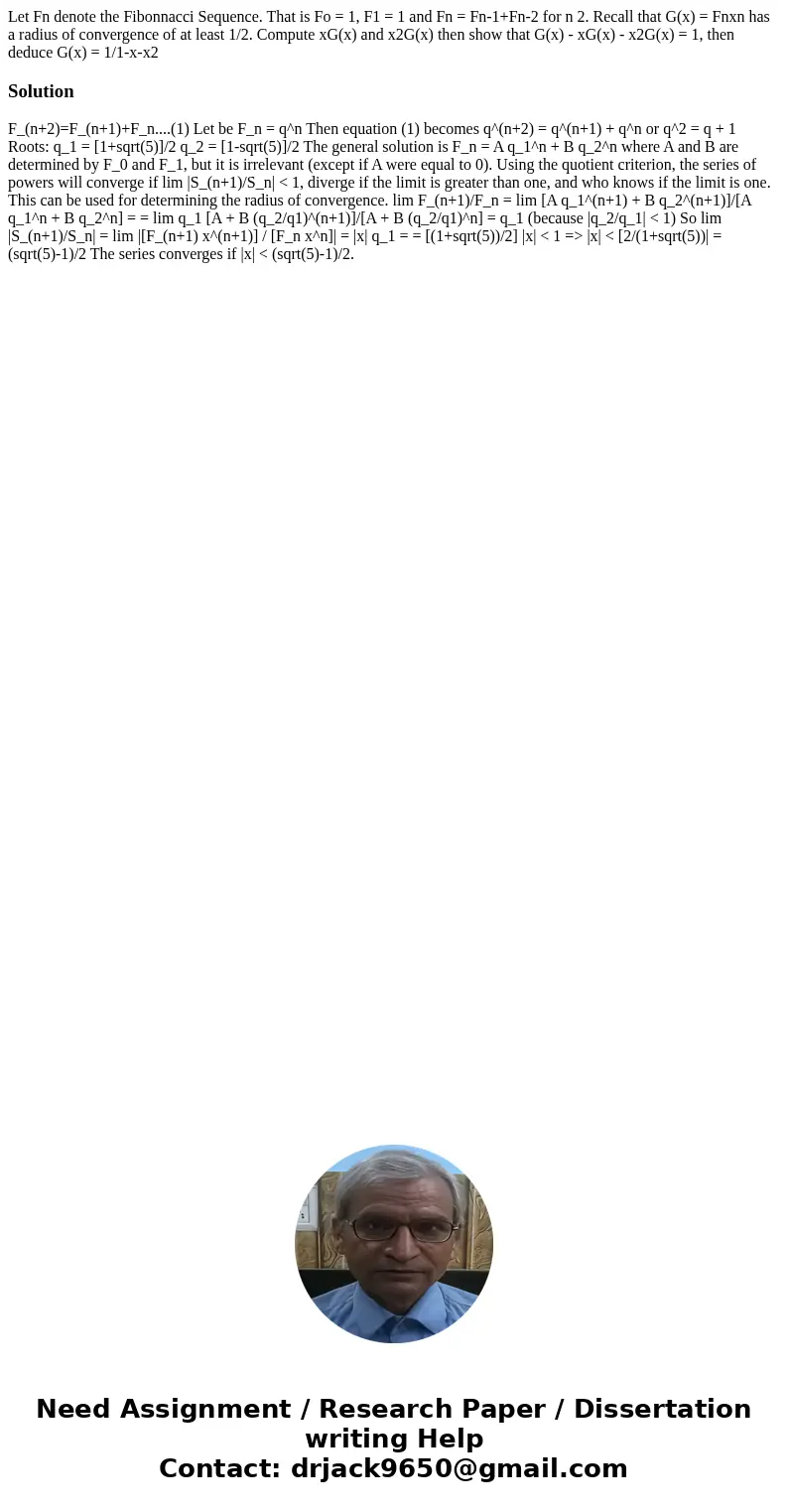Let Fn denote the Fibonnacci Sequence That is Fo 1 F1 1 an
Let Fn denote the Fibonnacci Sequence. That is Fo = 1, F1 = 1 and Fn = Fn-1+Fn-2 for n 2. Recall that G(x) = Fnxn has a radius of convergence of at least 1/2. Compute xG(x) and x2G(x) then show that G(x) - xG(x) - x2G(x) = 1, then deduce G(x) = 1/1-x-x2
Solution
F_(n+2)=F_(n+1)+F_n....(1) Let be F_n = q^n Then equation (1) becomes q^(n+2) = q^(n+1) + q^n or q^2 = q + 1 Roots: q_1 = [1+sqrt(5)]/2 q_2 = [1-sqrt(5)]/2 The general solution is F_n = A q_1^n + B q_2^n where A and B are determined by F_0 and F_1, but it is irrelevant (except if A were equal to 0). Using the quotient criterion, the series of powers will converge if lim |S_(n+1)/S_n| < 1, diverge if the limit is greater than one, and who knows if the limit is one. This can be used for determining the radius of convergence. lim F_(n+1)/F_n = lim [A q_1^(n+1) + B q_2^(n+1)]/[A q_1^n + B q_2^n] = = lim q_1 [A + B (q_2/q1)^(n+1)]/[A + B (q_2/q1)^n] = q_1 (because |q_2/q_1| < 1) So lim |S_(n+1)/S_n| = lim |[F_(n+1) x^(n+1)] / [F_n x^n]| = |x| q_1 = = [(1+sqrt(5))/2] |x| < 1 => |x| < [2/(1+sqrt(5))| = (sqrt(5)-1)/2 The series converges if |x| < (sqrt(5)-1)/2.
 Homework Sourse
Homework Sourse